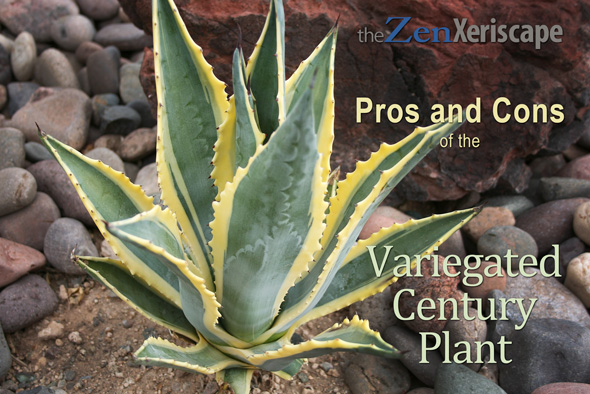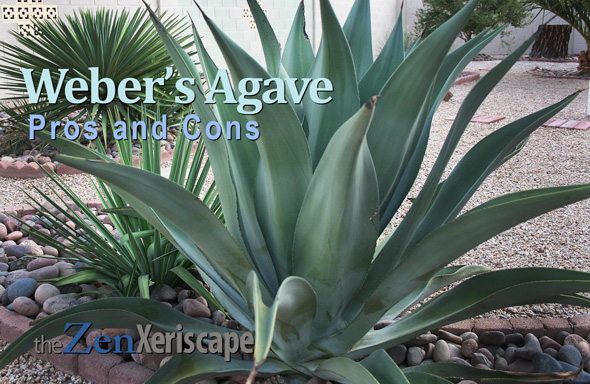Out of all the agaves I have in my landscape, most of my neighbors have told me that my butterfly agave (Agave potatorum) is their favorite. They love its symmetrical shape, its interesting leaves and spines, and its blue-gray leaves that include a tinge of green. So, what are the butterfly agave care guidelines?
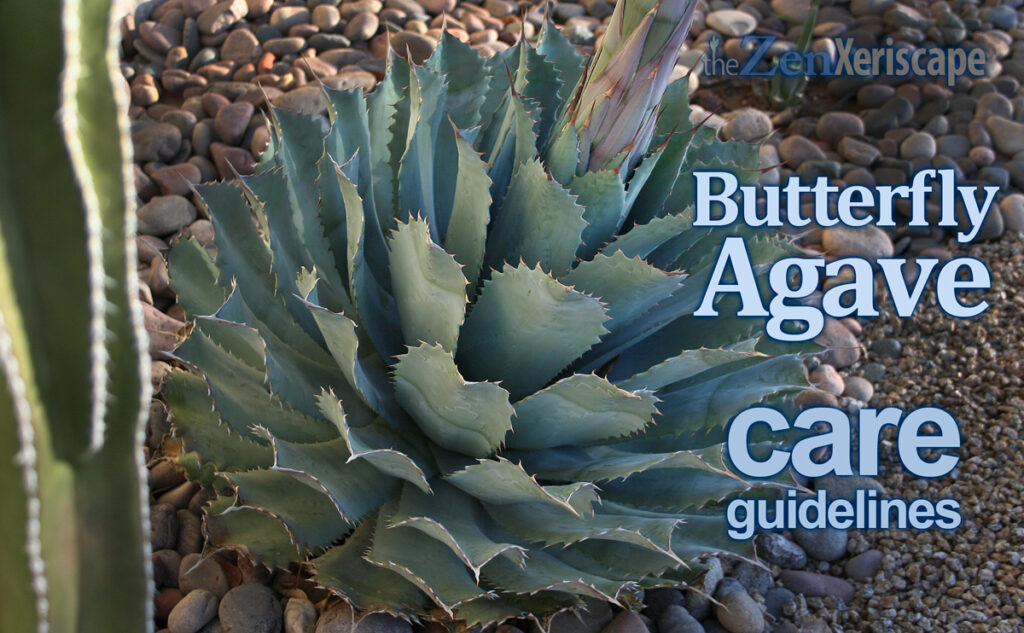
and beautiful agave. Like all agaves,
it is drought- and heat-tolerant.
Photo by Doug Martin
But first, what is the butterfly agave?
Butterfly agave description
The butterfly agave (Agave potatorum) originates from southern Mexico in higher elevations (over 3,000 feet). It looks especially beautiful and striking as a container plant, but will also garner lots of attention in your landscape.
This agave has a rosette of distinctive-looking, symmetrical, blue-green leaves. The oldest leaves are the largest and are on the outside of the plant. As the center rosette continues to grow, the plant gets wider and taller.
And, thanks to its heat- and drought-tolerance, the butterfly agave is easy to care for no matter where you have it planted.
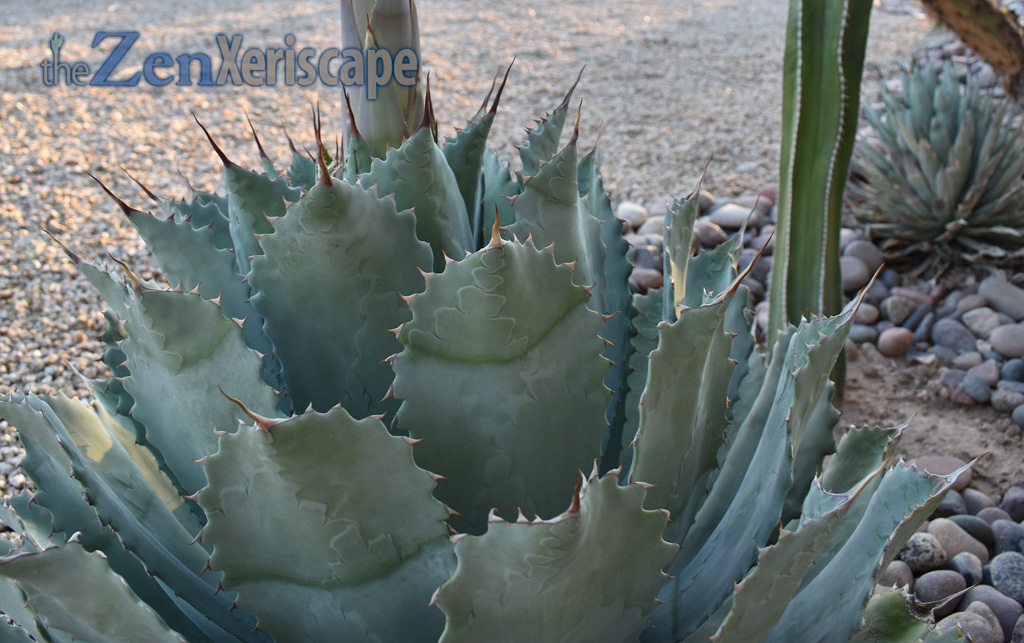
with sharp spines on its tips and edges.
Photo by Doug Martin
Amazon has some beautiful-looking plant containers and pots for your succulents—I could spend all day looking at the selections. Check for adequate drainage holes, and compare prices! (As an Amazon Associate, I earn a commission from qualifying purchases.)
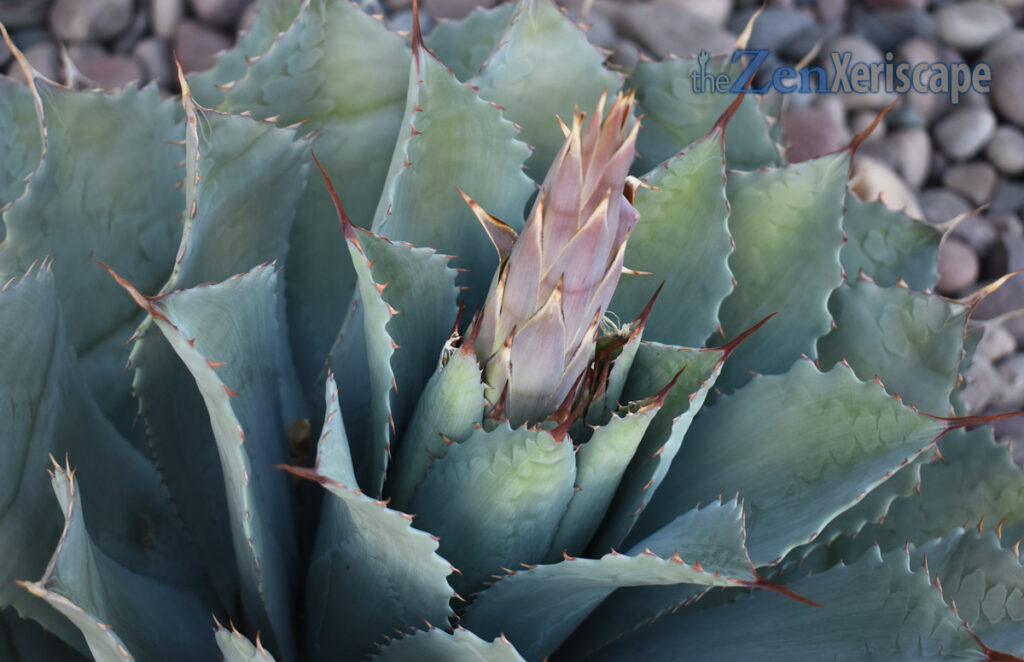
emerging from its rosette center.
Photo by Doug Martin
Butterfly agave care guidelines
> Loves the sun and hot temperatures
This beautiful agave tolerates extreme heat and full sun, but will also grow well in partly sunny locations with dappled afternoon shade. My butterfly agave sailed through our hot Phoenix summers in full sun while the temperatures reached over 110 degrees Fahrenheit for weeks at a time.
> USDA plant hardiness zones
The butterfly agave is also cold tolerant, and can survive temps down to about 25 degrees Fahrenheit without supplemental protection. In fact, it might survive even colder temperatures. Generally, this plant can live outside in USDA hardiness zones of 9-to-11.
To be safe, though, be ready to provide extra protection if you live in a USDA plant hardiness zone less than 9b. I live in the low altitudes of southern Arizona (9b), and this agave has survived temperatures that briefly dipped down to about 25 degrees.
One of the benefits of growing this plant in a container is that you can bring it inside on those extra-cold nights.
> Needs well-draining soil
Just like most agaves and other succulents, the butterfly cactus needs soil that drains well. Many times when I plant drought-tolerant agaves, I amend the soil to make my clay-based caliche drain well.
In general, I use a premixed succulent and cacti potting mix (paid link). And, in my clay-based soil, I might also add a little more perlite (paid link) to enhance water drainage.
However, I did not amend the soil when I planted my butterfly agave over five years ago. Instead, I used a pick to break up the hard caliche soil, pruned the roots to prevent them from wrapping around the base of the plant, and then placed the agave directly in the ground.
> Drought-tolerant
During the summer, I water my butterfly agave once-a-week. However, I never water near the base of this agave. When temperatures cool, I cut back that watering schedule back to once-a-month.
Before you water your butterfly agave, be sure the soil has completely dried. Too much water can cause rot, and might quickly kill your plant.
> Size and space requirements
Be sure to allow enough space in your landscape for this agave. At maturity, your butterfly agave could be almost 3 feet wide, and over 2 feet tall. My butterfly agave is about 10 years old now, and those are its current dimensions.
When I bought my agave, it was only 1 foot wide, and 9 inches tall. My guess is that it was already five years old when I bought it.
Amazon offers convenient tool kits for gardeners—they include everything you need to plant and maintain your landscape. Check prices and reviews before purchasing! (As an Amazon Associate, I earn a commission from qualifying purchases.)
> Growth rate
The growth rate is pretty slow for this medium-sized agave. My butterfly agave took five years to double in size. Other agaves, including the blue agave and century agave have a faster growth rate.
> Color and texture
Blue leaves with a hint of gray, along with a tinge of variable green, depending on the individual plant. The margins have red or orange spines to protect the leaves from hungry animals.
In my landscape, armies of hungry rabbits attack some of my tender agave pups. They chew on my blue agaves while they’re still young, but they have never touched my butterfly agave. Those protective spines do a good job of deterring predation.
> No pups or offshoots
Most of my agaves prolifically produce pups or offshoots. In fact, I have used agave pups to start whole colonies of blue agaves, Weber’s agaves, and century plants in my landscape.
Unfortunately, my butterfly agave has not produced any pups. That’s typical for this variety.
> Blooms only once, then it dies
The butterfly agave makes flowers only once in its life. After flowering, this agave will die.
The whole blooming spectacle begins when the butterfly agave gets about 10 years old.
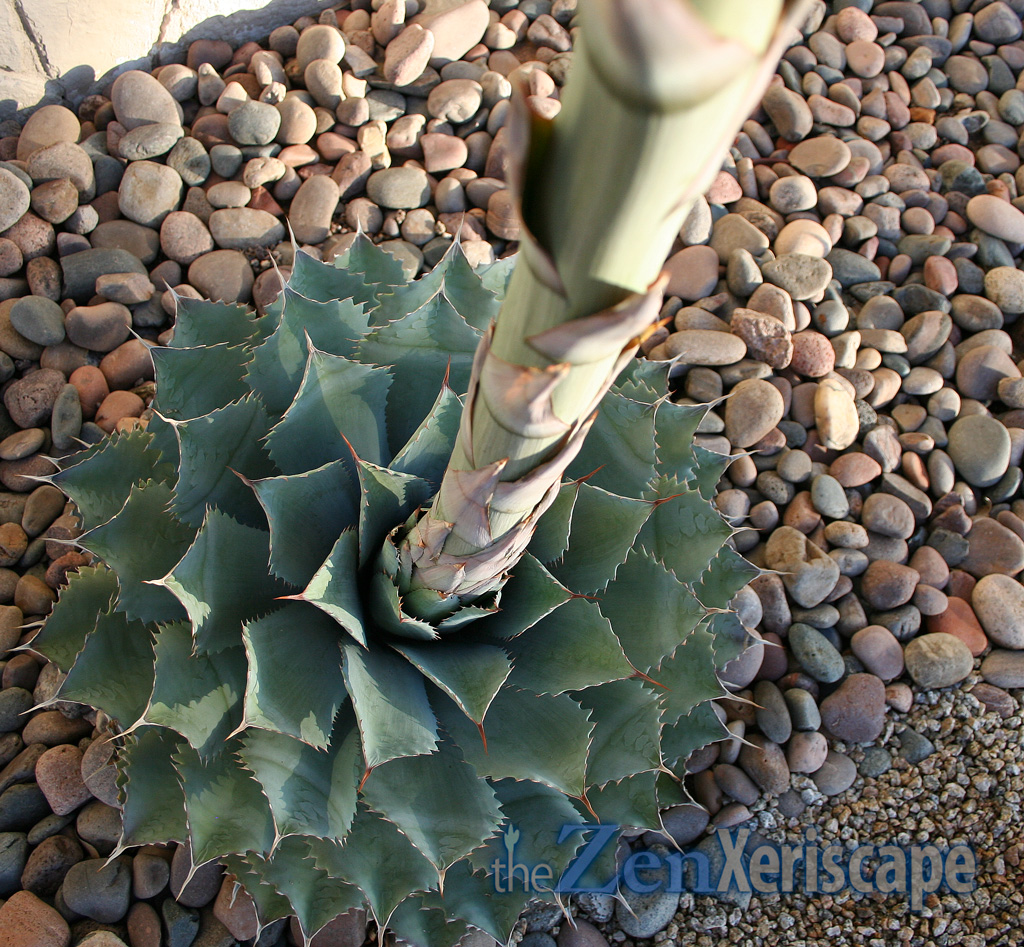
with a thick, supportive stalk.
Photo by Doug Martin
> Huge flower stalk
First, this agave will produce a huge stalk that might reach over 10 feet tall.
After the stalk reaches its final height, it will bloom with flowers that are yellow with hints of green. Afterwards, the whole plant will die.
My 10-year-old butterfly agave started its end-of-life flower stalk in October. The stalk grew quickly, and added a foot in height every week.
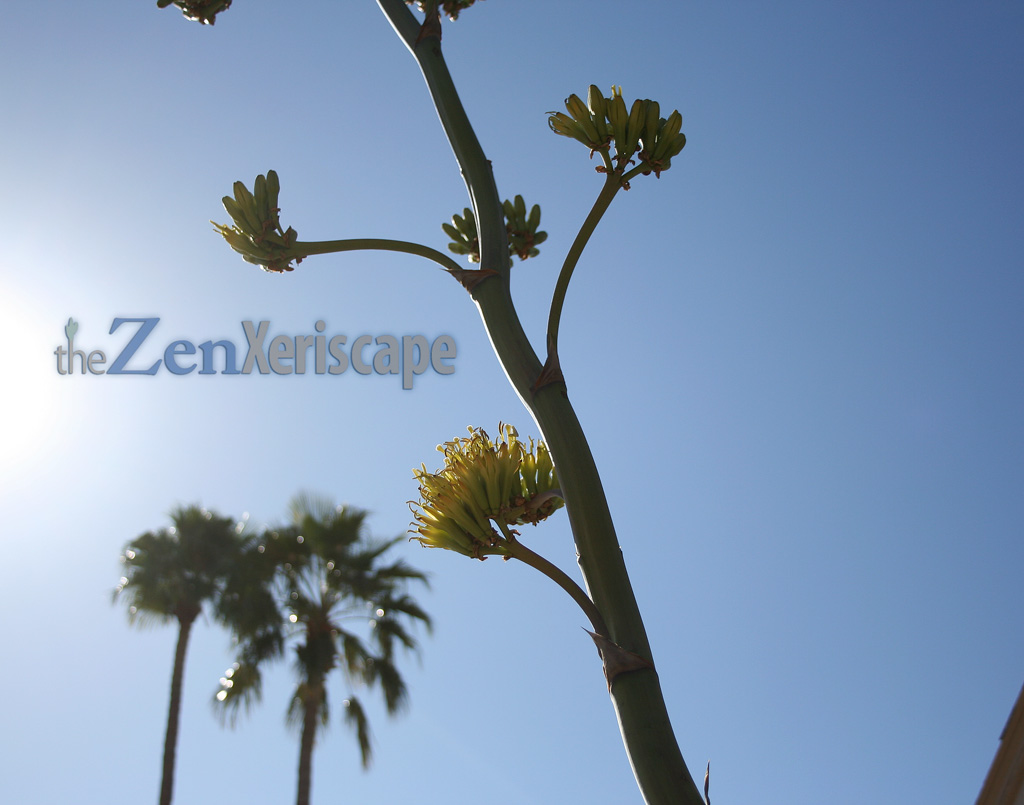
and displays flowers along with bulbils.
Photo by Doug Martin
> Propagate with bulbils
Since this agave does not produce pups, my hope is that I can harvest its bulbils. Simply, bulbils are miniature agave pups that grow on its flower stalk instead of around the base of the plant.
Once the agave dies, that flower stalk will tip over and the bulbils will contact the soil. From there, new plants can grow, and continue the cycle of life.
Instead of waiting until my plant dies, I’ll carefully harvest the bulbils from the flower stalk, just like I would cut away a pup from the base of the plant.
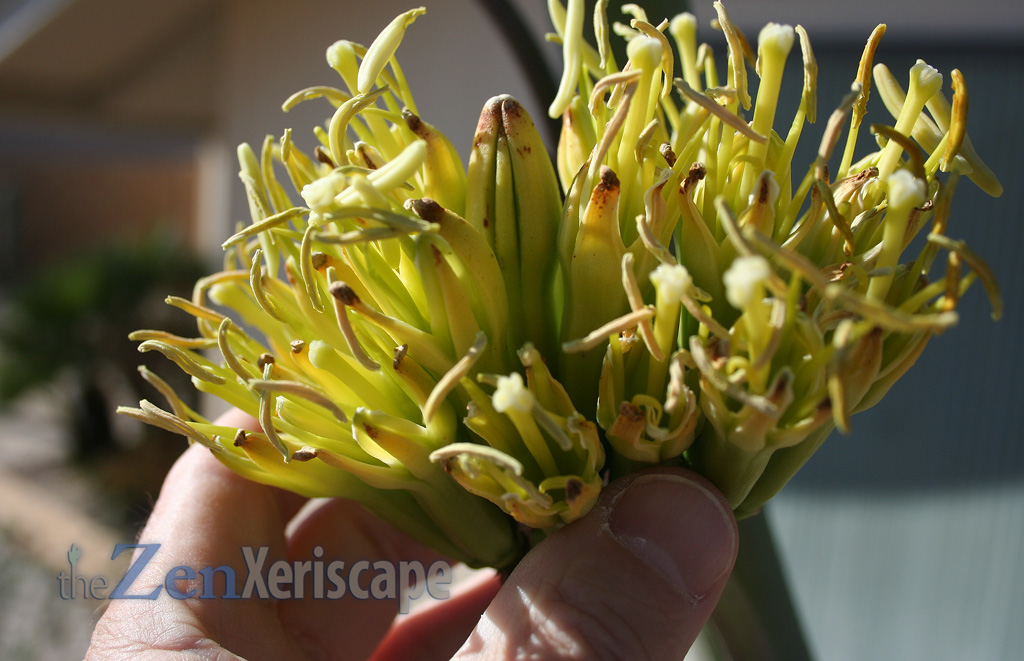
to propagate—it displays its flowers
and its bulbil, which is a miniature pup.
Photo by Doug Martin
> Butterfly agave gets the most compliments
As I’ve already noted, my butterfly agave gets the most compliments. My neighbors are drawn to its unique, spiny leaves along with its symmetrical composition. They also love the red spines that line the perimeter of the leaves to protect it from hungry predators.
Amazon Prime Memberships for the wise shopper. Check them out! (As an Amazon Associate, I earn a commission from qualifying purchases.)
TAKEAWAYS
Butterfly agave care guidelines
Out of all the varieties of agaves in my landscape, I think the butterfly agave is the most beautiful. Just like all agaves, this variety is heat- and cold-tolerant, and extremely hardy.
Grow the butterfly agave in your xeriscape, or in a container. If you are growing this plant inside, place in a bright room with a little direct sun exposure each day.
Water deeply, but infrequently. And plant in well-draining soil. Then, enjoy!
Content and photos by Doug Martin and The Zen Xeriscape


